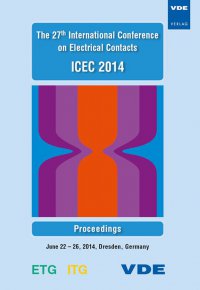A wear tolerant slip-ring assembly
Conference: ICEC 2014 - The 27th International Conference on Electrical Contacts
06/22/2014 - 06/26/2014 at Dresden, Deutschland
Proceedings: ICEC 2014
Pages: 6Language: englishTyp: PDF
Personal VDE Members are entitled to a 10% discount on this title
Authors:
Grandin, Martina; Wiklund, Urban (Tribomaterials Group, Uppsala University, Uppsala, Sweden)
Abstract:
An ordinary slip-ring configuration consists of a metal-graphite brush sliding against a metal alloy ring. Under optimal running conditions the brush will experience minute wear and a surface film will form on the ring. Despite a very low wear rate, in applications were space is limited, the brushes are small and require frequent replacement. A different approach is presented in this paper; an inverted assembly, with wear resistant brushes sliding against metal-graphite rings. It has the potential to displace all wear onto the ring, thus increasing the time between replacements. The ring material is pressed and sintered metal-graphite, more commonly used in brushes, while the wires are made from spring steel with either a copper or a TiN coating. It is shown that this configuration can distinguish clear differences in contact resistance caused by changing the amount of metal in the ring, the mechanical load of the wires or the current. The use of statistical measures of the contact resistance is shown to be a valuable way to investigate and describe noise. It is concluded that changing the properties of the ring has a larger impact on the contact resistance than changing the wire material. Analysis of the wire after testing shows that a tribofilm has formed that mainly consists of metal and carbon from the ring.


